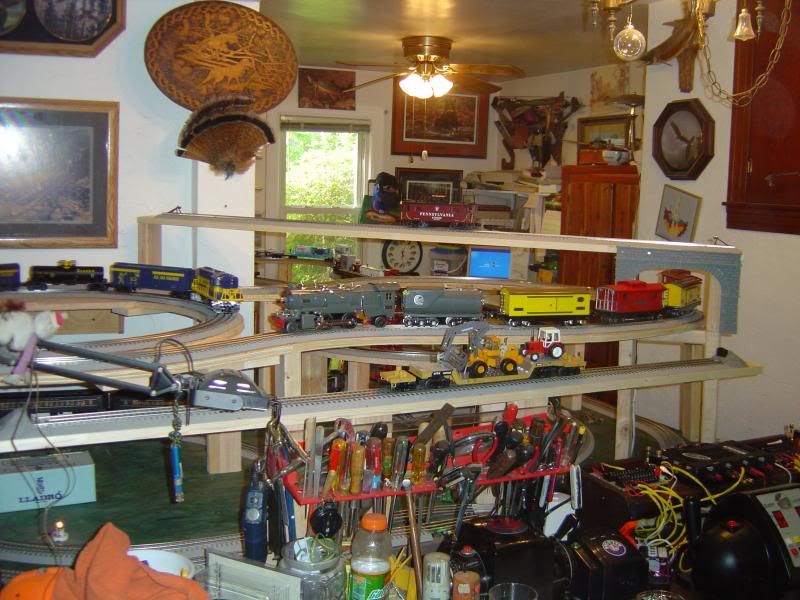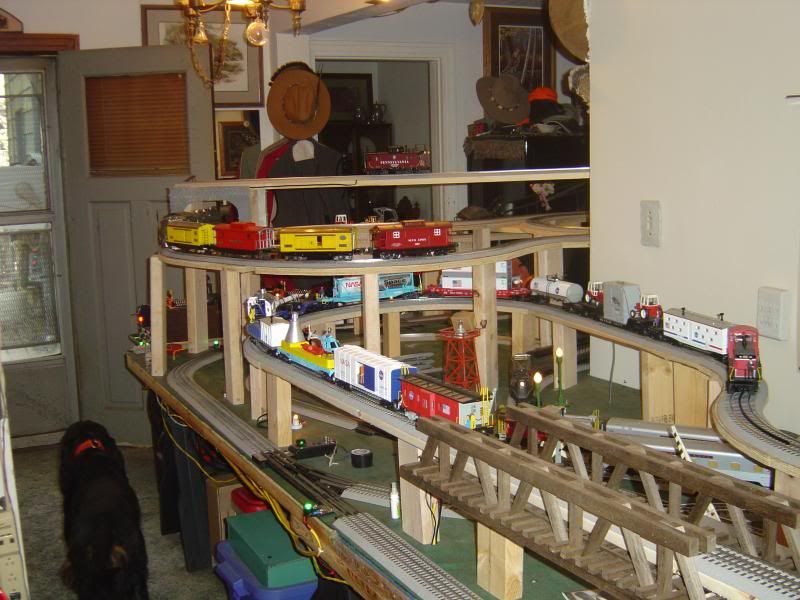Below is a picture of the power section for my electrical setup on my in-progress layout. There have been a couple of posts stating that the PSX needs to be installed between the transformer and the TIU to prevent DCS signal interference. However, for my two long main lines I will be running more than 10 amps and I have the TIUs wired in passive mode.
The PSX will be wired on the transformer side of the TIU lead connections. Since the DCS signal is already applied to the wire, does anyone know if this will interfere with the DCS signal to the track?
Thanks.
Ron
PS: The note within the PSX symbol (gray dot) should be amps, not volts.










